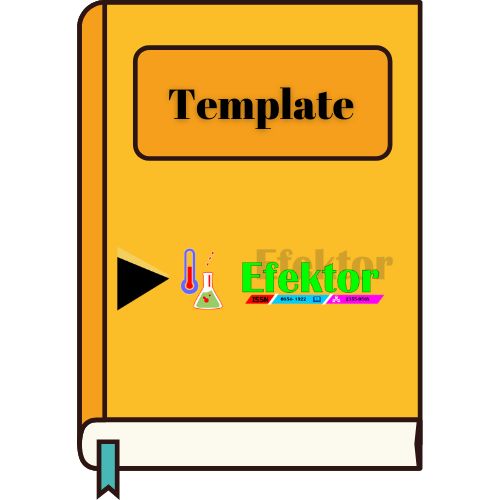Pengembangan Perangkat dan Model Pembelajaran Open Ended Learning Melalui Media Audiovisual dan Media Grafis Pada Materi Media Promosi
DOI:
https://doi.org/10.29407/e.v7i2.14918Keywords:
learning media, open-ended learning model, audiovisual media, graphic media, perangkat pembelajaran, model pembelajaran open ended learning, media audiovisual, media grafisAbstract
This research is motivated by the lack of student achievement levels of a subject due to learning carried out in conventional schools and less creative. This can be seen from the low psychomotor scores of students, which ultimately have an impact on learning outcomes below. In addition, school facilities are not evenly distributed, so that it has an impact on the enthusiasm of students to take part in learning. Therefore, the aim of this research is to find out the process of developing tools and learning models for Open-Ended Learning through audiovisual media and graphic media on promotional media materials for product marketing. This study uses a model research approach with research subjects a team of experts consisting of three people who are experts in why in their respective. The research was carried out in two stages, namely, two times the expert validation test. The results of this development research indicate very good criteria.
References
Arikunto, S. (2008). Prosedur Penelitian Suatu Pendekatan Praktik. Rhineka Cipta.
Arsyad, A. (2011). Media Pembelajaran berbasis SETS. PT. Raja Grafindo Persada.
Asnawir, & Basyiruddin, U. (2002). Media Pembelajaran. Ciputat Pers.
Chodijah, S., Fauzi, A., & Wulan, R. (2012). Pengembangan Perangkat Pembelajaran Fisika Menggunakan Model Guided Inquiryyang Dilengkapi Penilaian Portofolio Pada Materi Gerak Melingkar. Jurnal Penelitian Pembelajaran Fisika.
Irmayanti, E., & Surindra, B. (2019). Peningkatan Penguasaan Konsep “Kebijakan Fiskal dan Moneter” Melalui Model Pembelajaran Mandiri Aktif Bermedia Audio Visual pada Siswa Kelas XI-1 SMA Negeri 4 Kediri. Proceedings of the ICECRS, 2(1), 273–280. https://doi.org/10.21070/picecrs.v2i1.2384
Peraturan Menteri Pendidikan dan Kebudayaan Tentang Implementasi Kurikulum, Pub. L. No. 65 (2013).
Prasetyo, Z. K. (2011). Pengembangan Perangkat Pembelajaran Sains Terpadu Untuk Meningkatkan Kognitif, Keterampilan Proses, Kreativitas Serta Menerapkan Konsep Ilmiah Peserta Didik Smp. Universitas Negeri Yogyakarta.
Rochmad. (2012). Desain Model Pengembangan Perangkat Pembelajaran Matematika. Jurnal Matematika Kreatif-Inovatif (KREANO), 3(1), 59–72. https://journal.unnes.ac.id/nju/index.php/kreano/article/view/2613/2672
Sugiyono. (2017). Metode Penelitian Pendidikan (Pendekatan Kuantitatif, Kualitatif, dan R&D). Alfabeta.
Suprijono, A. (2012). Cooperative Learning. Pustaka Pelajar.
Suryani, N., & Dkk. (2018). Media pembelajaran Inovatif dan Pengembangannya. PT. Remaja Rosdakarya.
Suyatno. (2009). Menjelajah Pembelajaran Inovatif. Masmedia Buana Pustaka.
Widoyoko, E. P. (2012). Teknik Penyusunan Instrumen Penelitian. Pustaka Pelajar.
Downloads
Published
Issue
Section
License
Authors who publish with this journal agree to the following terms:
- Copyright on any article is retained by the author(s).
- The author grants the journal, the right of first publication with the work simultaneously licensed under a Creative Commons Attribution License that allows others to share the work with an acknowledgment of the work’s authorship and initial publication in this journal.
- Authors are able to enter into separate, additional contractual arrangements for the non-exclusive distribution of the journal’s published version of the work (e.g., post it to an institutional repository or publish it in a book), with an acknowledgment of its initial publication in this journal.
- Authors are permitted and encouraged to post their work online (e.g., in institutional repositories or on their website) prior to and during the submission process, as it can lead to productive exchanges, as well as earlier and greater citation of published work.
- The article and any associated published material is distributed under the Creative Commons Attribution-ShareAlike 4.0 International License













